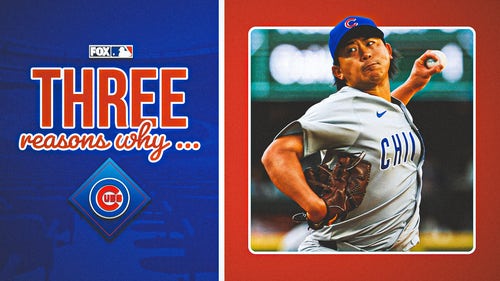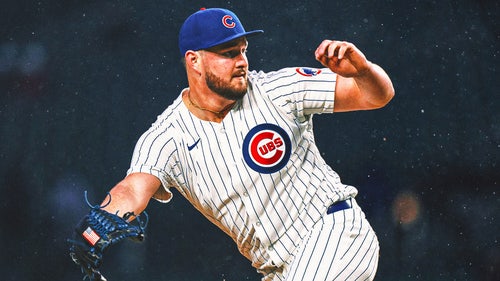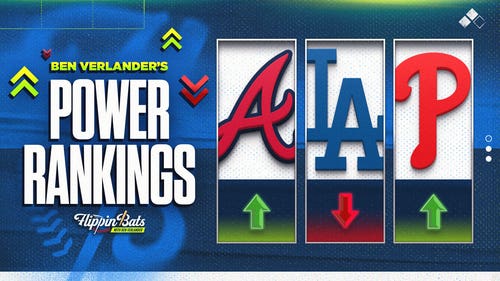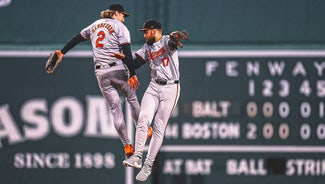
Hope springs eternal, except for these teams
The Kansas City Royals held their winter fanfest last weekend, bringing back members of the 1985 world championship team to celebrate the 25th anniversary of that memorable October in which the Royals twice overcame the odds, rebounding from losing three of the first four games in both the ALCS and World Series.
The celebration of the past, however, is muted by the reality of the present.
A month before spring training, fans of all 30 major league teams are supposed to have hope about what the coming season will bring.
Makes for good marketing. Bottom line, however, is while there is reason for hope with most teams, there’s no argument over which teams are the worst.
First place in the six divisions is up for debate.
Last place, however, is a slam dunk. Mark it down now.
Last place still belongs to the Royals in the AL Central, Oakland in the AL West, Toronto in the AL East, Washington in the NL East, Pittsburgh in the NL Central and San Diego in the NL West.
These are not overnight failures. They have earned the distinction.
The Royals were once the model franchise of baseball. That '85 season capped off a decade in which the Royals won six division titles, advanced to the playoffs seven times and twice participated in the World Series.
They, however, have since joined Pittsburgh as the poster children for baseball futility.
There was a change in leadership. Manager Dick Howser was diagnosed with a brain tumor in 1986 and died in 1987. General manager John Schuerholz resigned in 1990 to take a similar position in Atlanta. Original owner Ewing Kauffman died in 1993, the franchise then run by his estate under an ownership group led by David Glass, which bought the team in 2000.
Once an organization that thrived because of a farm system that produced the nucleus for that decade of success — anchored by Hall of Famer George Brett — it has since gone fallow. The marketing department has made efforts to reconnect with the past, including the slogan True Blue Tradition in 2007 and New Blue Tradition in 2008, but the product on the field hasn’t come close.
The Royals have gone through eight managers in 24 years, have had a winning record only once in 16 years, managed to finish as high as third only twice in 14 years and, after avoiding a 100-loss season in their first 33 years of existence, they have lost 100 or more four times in the last eight. The once productive organization has had a single All-Star 17 of the last 20 seasons.
And when the major off-season news is that catcher Jason Kendall opted to sign as a free agent because the Royals were the one place that offered him a chance to be the starting catcher, can anyone seriously predict that the franchise’s fortunes are about to change?
The Pirates, meanwhile, are coming off a professional sports record-setting 17 consecutive losing seasons, dating back to 1993, the year after the Pirates had won three consecutive division titles, and ownership decided to purge the roster.
This is a franchise that has been only 79 days in first place in the last 17 seasons — 32 of them in 1997. It’s finished in last place 10 times en route to surpassing that old record of 16 consecutive losing seasons, which belonged to the 1933-48 Philadelphia Phillies.
In fairness, the new leadership of president Frank Coonelly and general manager Neal Huntington have been on the job for only two years and have preached about a building process that is beginning with the formation of a farm system that had been gutted by a series of wasted No. 1 picks and limited bonus money. They are not promising instant success, which is wise.
The Nationals story began in Montreal and is a sad statement on the evolution of baseball to its current big-market, small-market stature. A team that seemed ready to be an annual contender a decade ago, suffered its first blow when original owner Charles Bronfman sold the franchise a consortium of Montreal businessmen head by Claude Brochu in 1991. There was a glimpse of hope in 1994. The Expos were set to knock off Atlanta in the NL East, but sitting in first place on Aug. 11 with a six-game lead on the Braves, the baseball world turned upside down on the Expos.
First the players went on strike, forcing cancellation of the 1994 World Series, and then Brochu’s ownership group went on a cost-cutting spree that gutted the franchise. In that off-season alone, the Expos lost outfielder Larry Walker to free agency, refusing to offer him arbitration, and then dealt closer John Wetteland to the Yankees, rotation ace Ken Hill to St. Louis and center fielder Marquis Grissom to Atlanta without getting a player in return who became a big-league regular.
And then things got worse. Jeffrey Loria bought the team in 1999, and in 2002, after plans to contract and eliminate Montreal and Minnesota went bad, Loria was allowed to buy the Florida Marlins from John Henry, who was buying Boston, and Major League Baseball took control over the Expos.
Omar Minaya, named the general manager by MLB, went for a quick fix during the 2002 season that further retarded the organization, giving up prospects Cliff Lee, Brandon Phillips and Grady Sizemore along with Lee Stevens to acquire Bartolo Colon from Cleveland. And if that wasn’t enough of an insult to the Montreal fans, in 2003, with the Expos in a five-way tie for the NL wild-card race on Aug. 28, word came out that Major League Baseball would not approve the $50,000 it would have cost to bring up additional players when rosters expanded in September.
"It was a message to the players," Minaya said of a team that lost 15 of its final 27 games, and eventually was shipped to Washington, D.C., where the third time is not so charming for Major League Baseball in the nation’s capital.
With crowds having failed to respond to the simple arrival of big-league baseball, the Nationals front office has taken a dangerous path this off-season, signing second-tier free agents — right-handed pitcher Jason Marquis, catcher Pudge Rodriguez and reliever Mike Capps — to sizable salaries to appease the restless ticket buyers. Bottom line is that off-season window dressing won’t hide in-season failures.
The A’s were the hope for small-budget franchises in the early part of the decade, but they got caught up in the hype about Moneyball and outsmarting the rest of baseball, and seemingly overlooked that the root of their success was a dominating rotation. When the quartet of Mark Mulder, Barry Zito, Tim Hudson and Rich Harden keyed four consecutive division titles in the first four years of the century, but failed to advance past the first round of the postseason, changes were made. But strong pitching was still a key when the A’s return to the AL West title in 2006 and advanced to the ALCS behind a rotation build around Zito, Harden and the additions of Dan Haren and Joe Blanton.
None of those starting pitchers, however, remain. And the A’s have fallen on hard times, searching for an identity, changing lanes consistently. Figure this out. Two years ago they dealt Dan Haren to Arizona for a package of young players that was built around outfielder Carlos Gonzalez. A year later, they dealt Gonzalez, closer Huston Street and lefty Greg Smith to the Rockies for outfielder Matt Holliday. And then, last July, they dealt Holliday to St. Louis for a package of prospects supposedly built around third baseman Brett Wallace, who the A’s then dealt to Toronto this off-season for another prospect, outfielder Michael Taylor.
Now they find themselves the only member of the four-team AL West without hope for the coming season.
Toronto was once the model franchise for all of baseball, but then along came the reign of general manager J.P. Ricciardi, who immediately upon his hiring tore up a scouting department that was the backbone to a farm system that had produced more players than any in baseball for more than a decade. And after announcing upon his arrival that he had learned in Oakland how to succeed on a limited budget, proved his lessons hadn’t hit home because the Jays faded into oblivion, and Ricciardi began to whine that he couldn’t compete with the big bucks of Boston and the Yankees, even though in 2008 Tampa Bay showed those two big-spenders were not invincible.
Ricciardi is now history, and the Jays are going back to their roots, rebuilding a scouting staff that had been ravaged, but it’s not an overnight success formula, and there are no false promises that Jays fans grew tired of hearing from the Ricciardi regime.
San Diego has become the unsolvable puzzle with its recent actions. Coming off back-to-back division titles in 2005-06, the Padres saw a third consecutive postseason appearance disappear in the final days of 2007. After back-to-back losses at Milwaukee in the final two games of the regular season, including Trevor Hoffman blowing a ninth-inning lead with two outs and an 0-2 count on Tony Gwynn, Jr., in Game No. 161, the Padres lost a play-in game with the Rockies when Hoffman couldn’t close out an 8-6 lead in what became a 9-8, 13-inning loss, and it’s been downhill ever since.
The budget was slashed thanks to a pending divorce of owner John Moores, and a depleted farm system as a residual of a three-pronged front office in which scouting director Bill Gayton was constantly overruled by the Sandy Alderson brigade, the Padres underwent a major change of direction in the last year. Former agent Jeff Moorad entered into a purchase agreement with Moores last winter that allowed Moorad immediate control of the team and led to this off-season’s firing of highly regarded and well-liked general manager Kevin Towers.
It did not, however, result in any influx of talent, which leaves the Padres as the only team in the NL West without a hope for contention in 2010.












































































































































